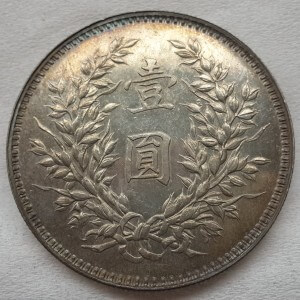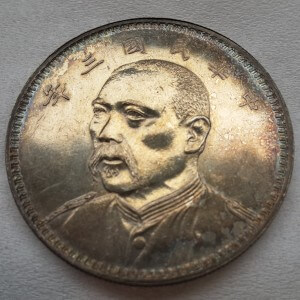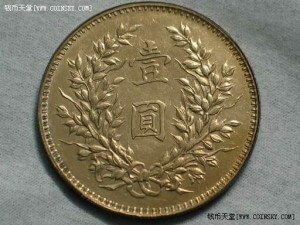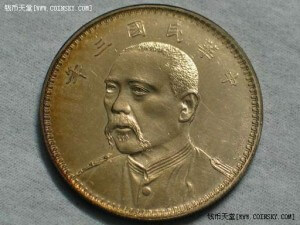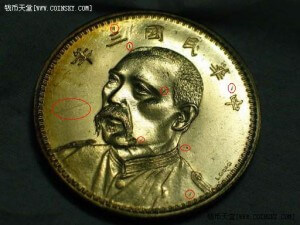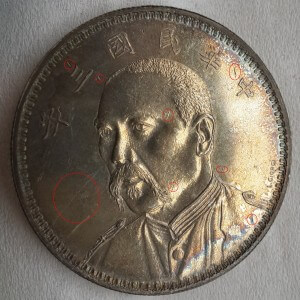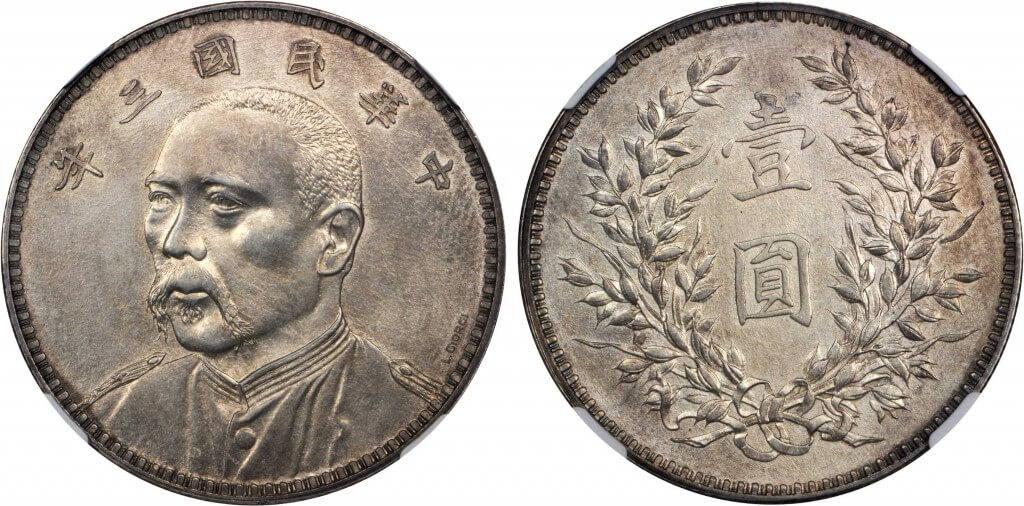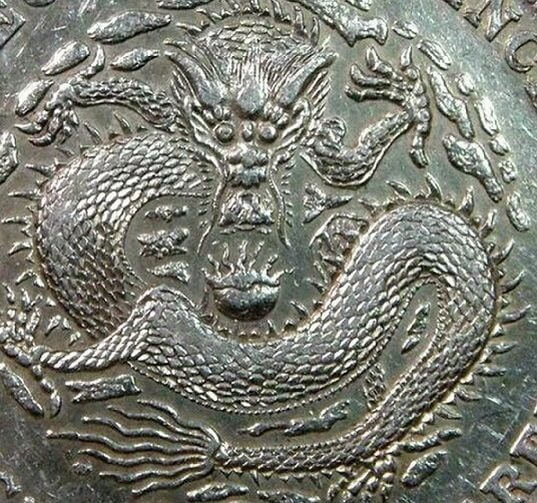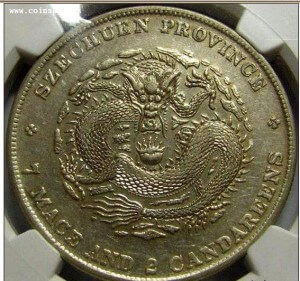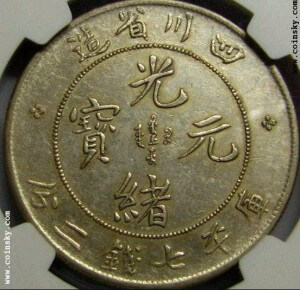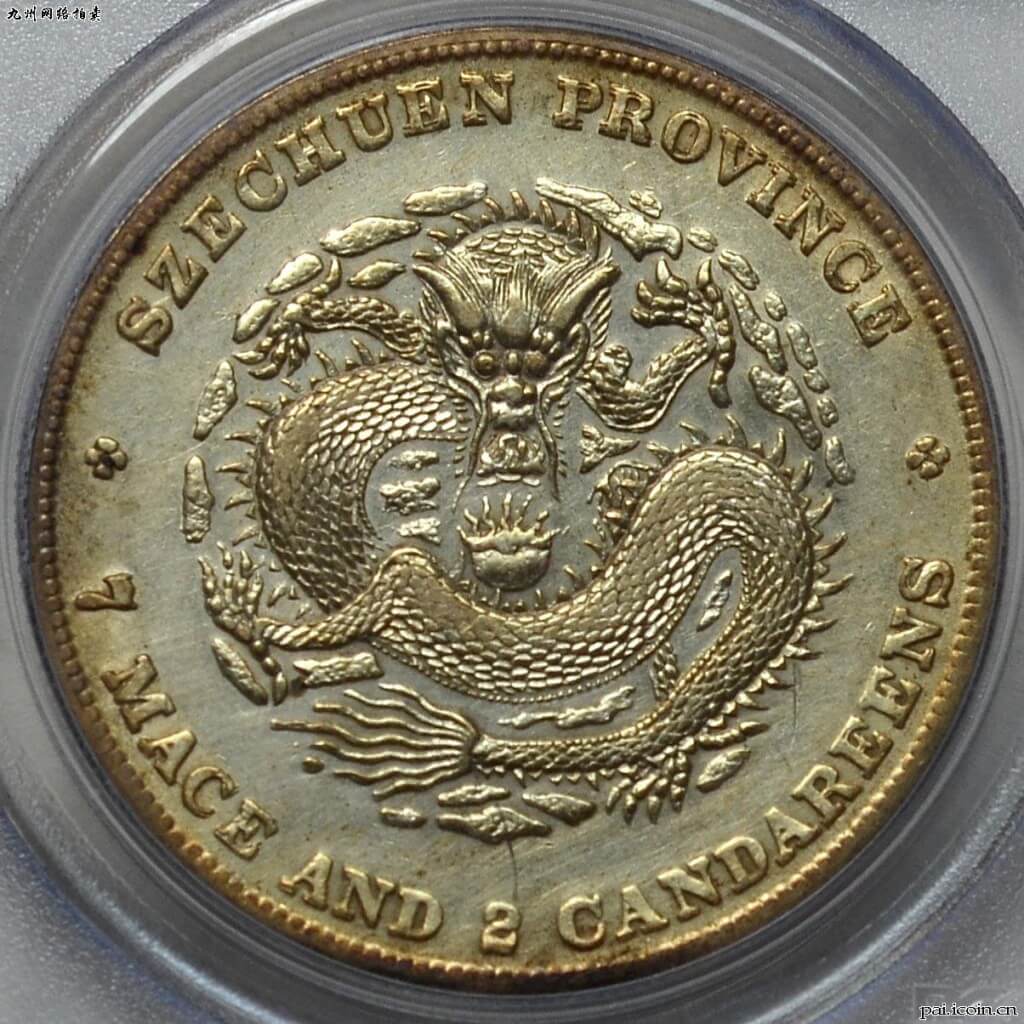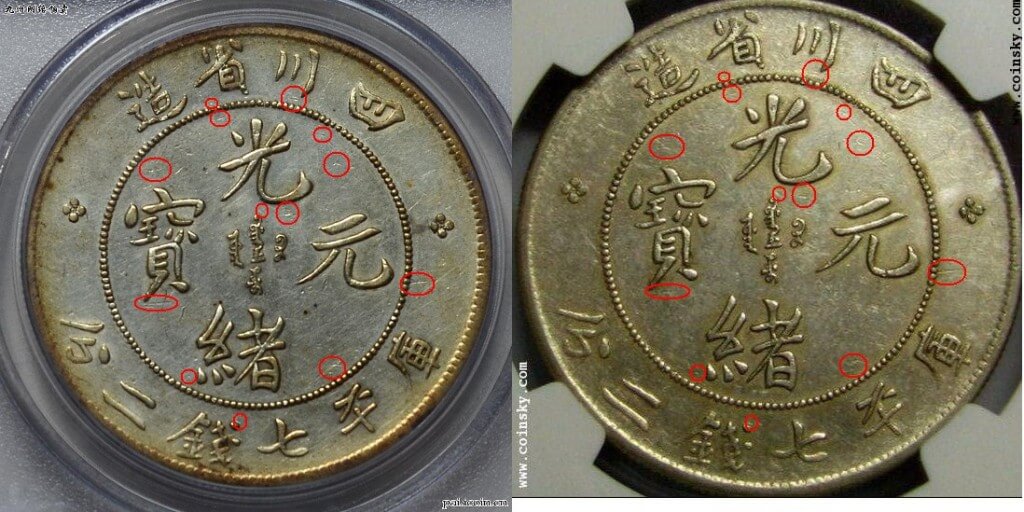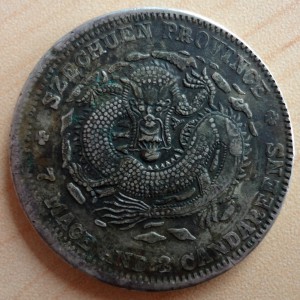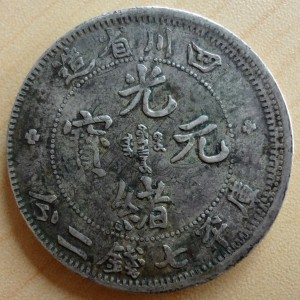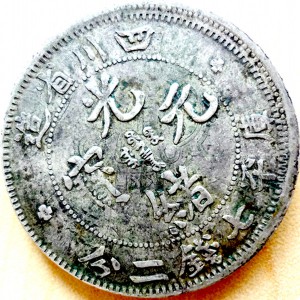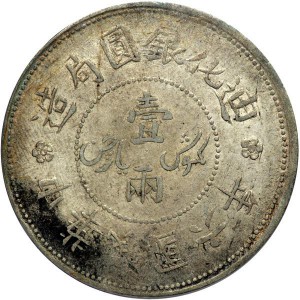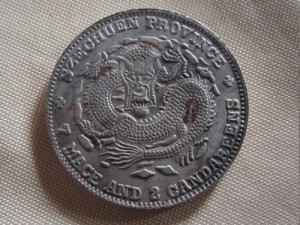Summer is nearing its end, and the Hong Kong auctions season begins. August is usually an interesting time for Chinese coins collectors, when rare coins are made available on the market and new prices are set.
I was browsing the catalogue of Rarehouse, when I was intrigued by one of the highlight of the auction. The denticles of the lot 1355, a rare Yuan Shih Kai pattern coin, bothered me. These teeth reminded me a lot of two other coins I have seen before.
The first coin was introduced to me by a good friend, who was already in the midst of negociation with the owner and wanted my opinion about the deal. It was a beautiful specimen of an extremely rare Yuan Shih Kai dollar, with the signature of the famous Italian engraver L. Giorgi.
The price tag was not too high for this type – ¥200,000 CNY, or about $32,000 USD. This looked like a good deal, but I usually collect Imperial dragon dollars, so I decided to learn more about this type online.
That’s how I stumbled upon the sister of that coin. It was sold in 2005 on Coinsky, one of the largest numismatic forums in China, by the same collector from the Jiangsu province that now proposed to my friend the coin that sparked my curiosity.
The identical scratches could not lie; as in previous articles, this was an indubitable proof that both coins were fake (click on the picture on the right for higher resolution).
Both replica coins also shared a strange defect, especially for pattern coins: the denticles on their obverse were really badly struck. Here is for comparison a picture of a genuine, graded pattern, lot 41099 at the upcoming Stack’s Bowers auction:
Small details matter: as you can see, the denticles are sharp and well struck.
My advice to fellow collectors looking forward to acquire rare and expensive Chinese coins this season would be to favour coins graded by PCGS. Raw coins can be cheaper, but if they end up being fake, you are on your own. For this kind of high level items, this can mean a $32,000 USD setback…
A good friend from Hangzhou recently contacted me regarding a Chinese coin he was interested in purchasing. It was a beautiful but rather expensive Szechuan coin (¥100,000 RMB or about $16,400 USD at the time of writing), and he was unsure about the deal.
The Szechuan dollar my friend was considering to buy was a high grade sample of the rare “库 not connected” variety (四川光绪剑毛龙无头车). It had sharp details and was graded AU50 by NGC, however the coin had clearly been cleaned and my friend hoped for a discount.
I browsed past sales results when I was struck by the similitude between the coin my friend coveted and a Szechuen dollar sold at the Jiuzhou 2012 Summer Auction (九州2012夏季机制币、纸币拍卖专场). At first, I thought that the coin graded XF details by PCGS had been re-submitted to NGC in a bid for a more favorable grade, but I quickly verified that the coins’ obverse were distinct.
While carefully examining the reverse, I was troubled to find an identical scratch below the right side rosette. Despite the low resolution of the pictures sent by my friend, it was obvious this ought to be a circulation mark. Two coins of the same type often exhibit wear or weak strike in the same place, but identical circulation marks should never be observed: it would indeed imply both coins were randomly damaged in the exact same fashion while being handled by countless men and women through a century!
The scratches I highlighted on the picture above were damning evidences that both coins were very high level forgeries. The counterfeiters went to the trouble of striking different obverses, but were surprisingly lazy etching the same marks on the reverse. The replica is still stunning, and actually fooled two world-class grading agencies and the highly experienced Chinese coins collectors who bought them. It is especially troubling that without the inexplicable laziness of the counterfeiters, and a stroke of luck comparing pictures on the Internet, both fake coins would have most likely stayed undetected.
Once again, I will urge my dear readers to listen to their instinct when buying: if you are somehow hesitant about a deal, like my friend was, the best decision is often to walk away. It is also best to avoid buying cleaned or polished coins altogether, especially in high grade, as it is too convenient a camouflage for artificial aging.
Last month I wrote that chinese coins collectors ought to be especially careful in hunting fantasy dollars. Counterfeiters are well aware of the growing interest in these very special coins and have been increasingly daring and creative to profit from this trend.
This month I would like to show you a very interesting sample: a Szechuan dollar struck over a Sinkiang tael.
This unusual Chinese coin has been cleverly crafted to deceive advanced collectors. The design of this Szechuan dollar could reasonably be attributed to some unofficial or private mint, and details of the host coin are immediately noticeable underneath, particularly on the reverse.
This intriguing coin is obviously tempting for the warlord dollars collector. It is however a cheap forgery. The weight of this coin (35 grams) is consistent with its face value of one Xiāng Píng Tael (湘平壹两), and the worn out surfaces effectively conceal the abnormally soft details of the host coin. The shallow strike on the rims is still visible though and should immediately arouse suspicion. More generally, a 1917 coin of an higher denomination overstruck with a demonetized, lower face value coin type should also raise a few eyebrows.
The main problem with this coin though is that this particular Sichuan dollar design is a well-known fake Chinese coin type. From that point on, it is easy to guess that some enterprising counterfeiter decided that striking fake Xinjiang taels with an odd-looking Szechuan dollar would make them more interesting and less obvious to spot.
